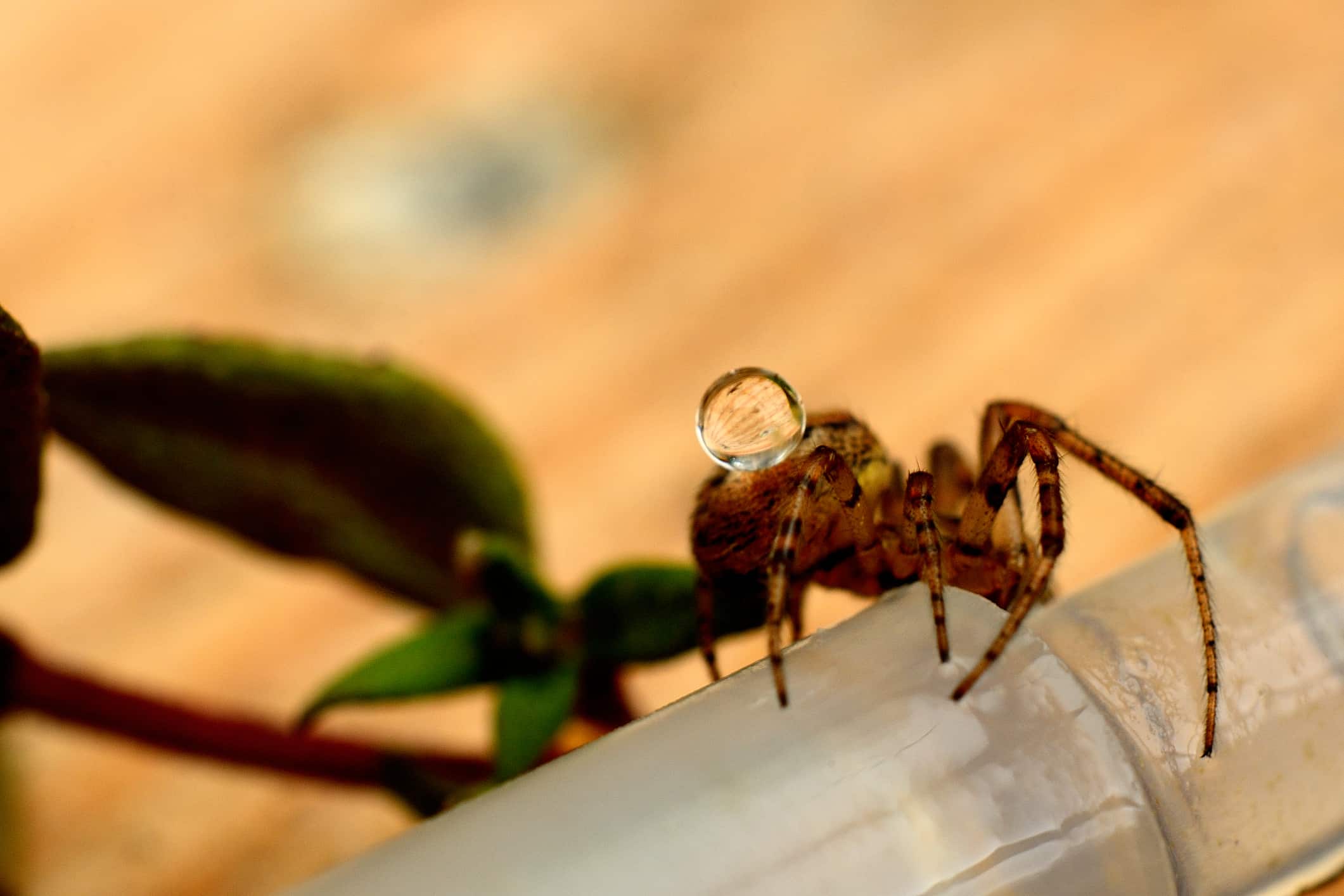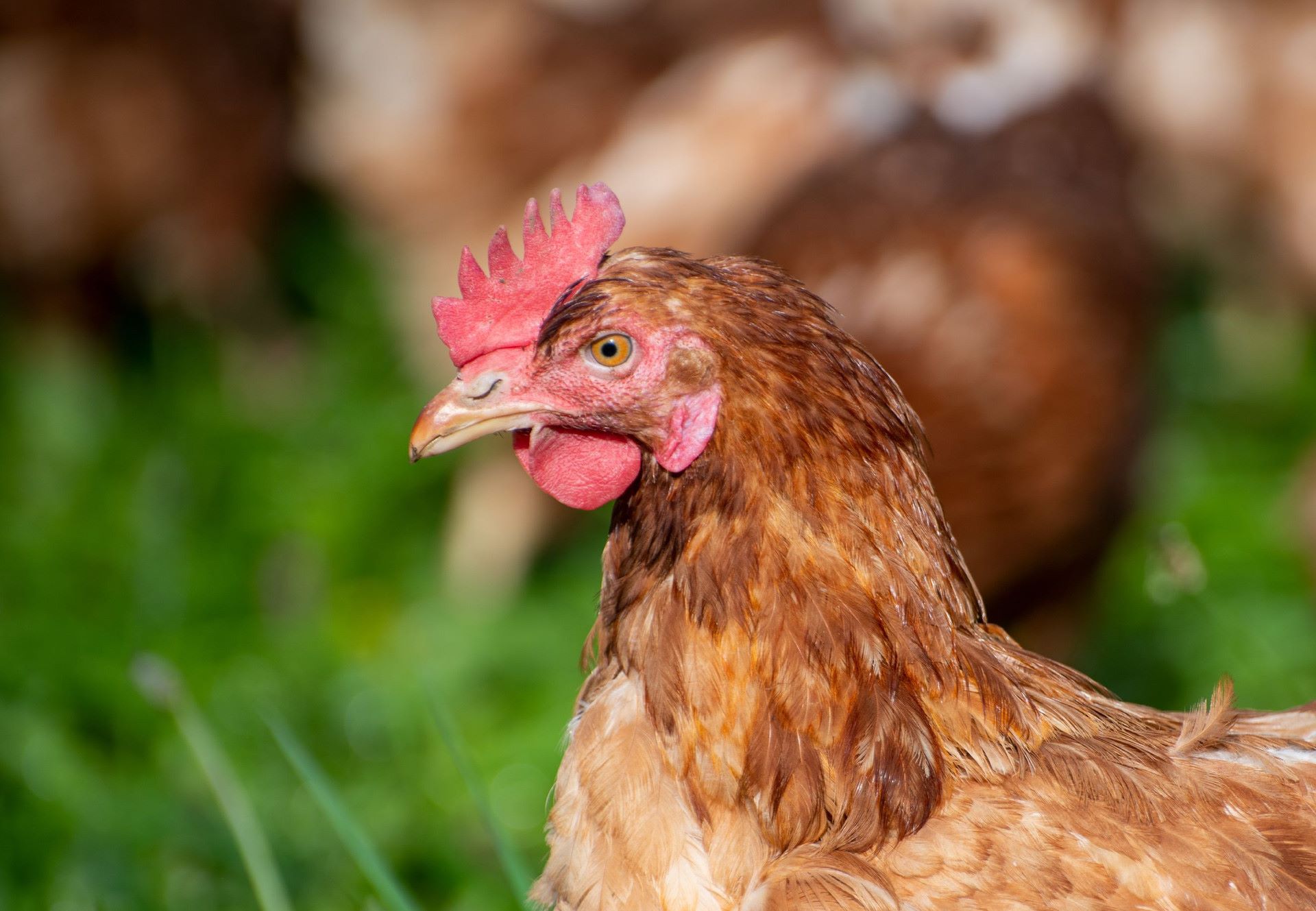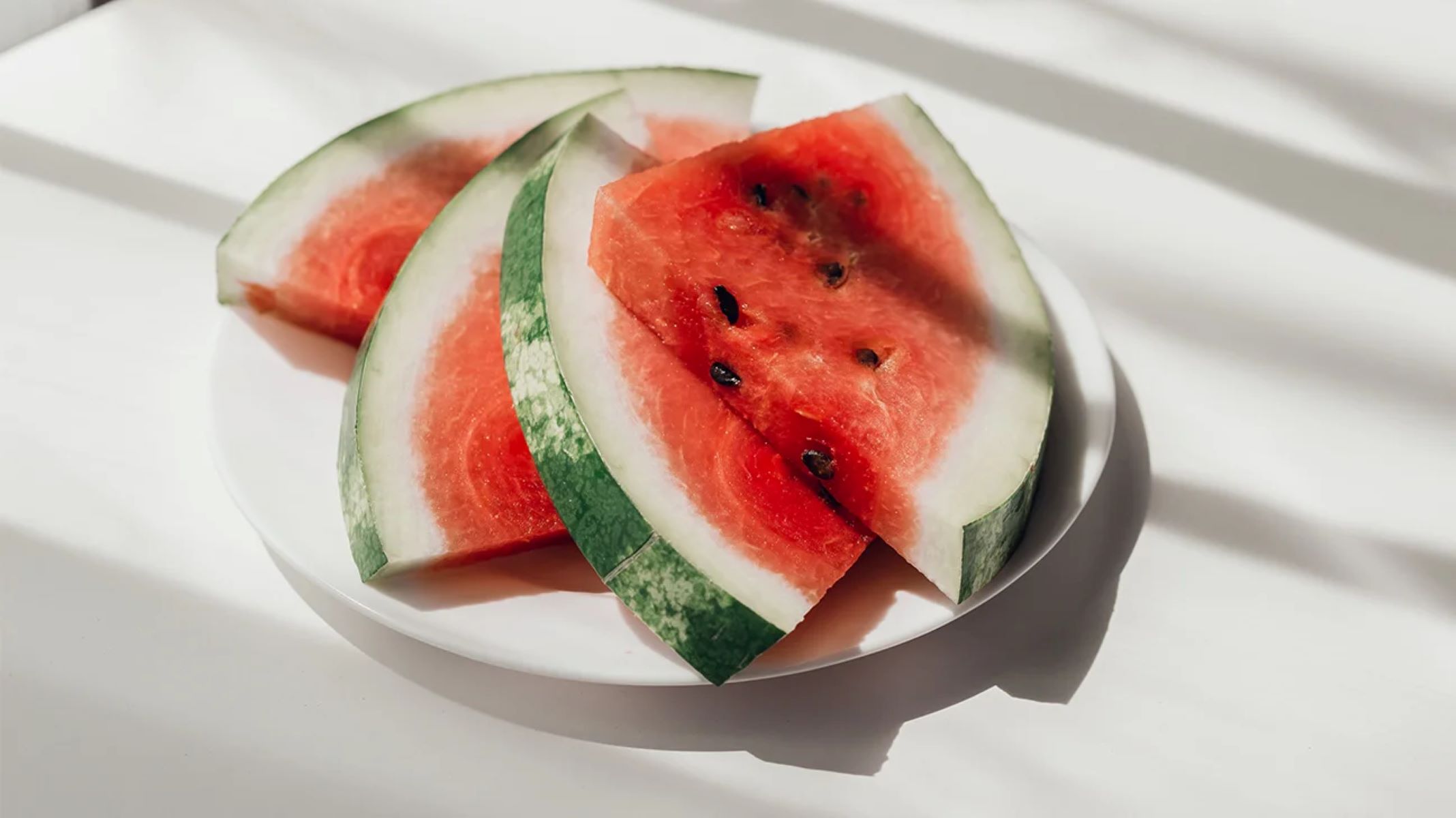Home>Science>You Won’t Believe What Spiders Use Instead Of Tongues!


Science
You Won’t Believe What Spiders Use Instead Of Tongues!
Published: January 29, 2024
Discover the fascinating world of spider biology and behavior in this intriguing scientific exploration. Uncover the surprising truth about spiders' unique feeding mechanisms and more.
(Many of the links in this article redirect to a specific reviewed product. Your purchase of these products through affiliate links helps to generate commission for Regretless.com, at no extra cost. Learn more)
Table of Contents
Introduction
Spiders, those eight-legged marvels of the animal kingdom, have long fascinated and intrigued both scientists and the general public. These arachnids are renowned for their intricate webs, remarkable hunting techniques, and, of course, their venomous bites. However, what many people may not realize is that spiders possess a truly astonishing adaptation when it comes to feeding. Unlike most creatures, they do not have tongues to manipulate their food. Instead, they have evolved a unique method involving silk and fangs that sets them apart from other members of the animal kingdom.
This article delves into the extraordinary world of spiders and explores the surprising ways in which they use silk and fangs in lieu of tongues for feeding. By uncovering the intricacies of these adaptations, we gain a deeper understanding of the remarkable capabilities of these remarkable creatures. Let's embark on a captivating journey into the world of spiders, where the extraordinary becomes the everyday and the seemingly mundane is anything but.
The Role of Spiders' Mouthparts
Spiders, like all living organisms, have evolved specialized anatomical features that enable them to carry out essential functions for survival. When it comes to feeding, the mouthparts of spiders play a crucial role. Unlike mammals and many other creatures, spiders lack the typical chewing mouthparts, such as tongues and teeth. Instead, they possess a unique set of structures that are specifically adapted for their predatory lifestyle.
At the forefront of a spider's mouthparts are the chelicerae, which are the small, pincer-like appendages located at the front of the cephalothorax. These remarkable structures serve multiple functions, including feeding, defense, and silk manipulation. The chelicerae are equipped with fangs, which are hollow, needle-like structures used for injecting venom into prey. This venom not only immobilizes the prey but also aids in the digestion of the internal tissues, allowing the spider to consume its meal more efficiently.
In addition to their role in venom delivery, the chelicerae also play a vital part in the manipulation of silk. Spiders use their chelicerae to produce silk from specialized abdominal glands, and the silk is then manipulated by the spider's appendages for various purposes, such as web-building, prey capture, and shelter construction.
Another essential component of a spider's mouthparts is the labium, which is located underneath the chelicerae. The labium functions as a support structure during feeding and aids in the handling of prey. It also plays a role in the manipulation of silk during web construction.
Furthermore, the maxillae and labia are additional mouthpart structures that assist in prey manipulation and silk handling. These intricate mouthparts collectively enable spiders to carry out the complex tasks associated with feeding, from capturing prey to consuming and digesting it.
In essence, the mouthparts of spiders are marvels of evolutionary adaptation, finely tuned to meet the specific demands of their predatory lifestyle. By understanding the role of these unique structures, we gain insight into the remarkable capabilities of spiders and the intricate mechanisms that underpin their feeding behaviors.
The Surprising Adaptation: Silk and Fangs
Spiders have evolved a truly astonishing adaptation when it comes to feeding. Unlike most creatures, they do not have tongues to manipulate their food. Instead, they have developed a unique method involving silk and fangs that sets them apart from other members of the animal kingdom. This remarkable adaptation showcases the ingenuity of nature and the extraordinary capabilities of these fascinating arachnids.
The combination of silk and fangs represents a remarkable evolutionary solution to the challenges spiders face when feeding. Silk, produced from specialized glands in the spider's abdomen, serves a multitude of purposes, including web construction, prey capture, and shelter building. It is a versatile and essential tool that plays a central role in the spider's feeding process.
When it comes to feeding, spiders utilize their silk in conjunction with their fangs to overcome the absence of traditional mouthparts such as tongues and teeth. The silk produced by spiders is not only used for web-building but also for wrapping and immobilizing prey. This process, known as wrapping prey in silk, serves multiple functions. It not only subdues the prey, making it easier for the spider to handle, but also aids in the preservation of the prey for future consumption.
In addition to its role in prey immobilization, silk also facilitates the feeding process by allowing spiders to extract nutrients from their prey more efficiently. Once the prey is securely wrapped in silk, the spider uses its fangs to inject digestive enzymes, which break down the internal tissues of the prey. The liquefied tissues are then consumed by the spider, allowing for a more efficient and thorough extraction of nutrients.
Furthermore, silk plays a crucial role in the construction of egg sacs, providing protection and support for developing spiderlings. This demonstrates the diverse and indispensable nature of silk in the life cycle of spiders, extending beyond feeding to encompass aspects of reproduction and survival.
The integration of silk and fangs as feeding adaptations highlights the remarkable resourcefulness of spiders in navigating the challenges of their predatory lifestyle. This unique approach to feeding not only sets spiders apart from other organisms but also underscores the intricate and finely tuned adaptations that have evolved in response to the diverse ecological niches occupied by these remarkable arachnids.
How Spiders Use Silk and Fangs for Feeding
Spiders have evolved a remarkable method of feeding that involves the intricate coordination of silk and fangs. This unique approach to feeding sets them apart from other creatures and showcases the remarkable adaptability of these arachnids. The utilization of silk and fangs in the feeding process exemplifies the resourcefulness of spiders in overcoming the absence of traditional mouthparts such as tongues and teeth.
When it comes to capturing and consuming prey, spiders rely on their silk-producing abilities to create a diverse array of silk structures, including webs and egg sacs. The silk serves as a multifunctional tool that enables spiders to effectively capture, immobilize, and consume their prey.
Upon encountering prey, spiders swiftly deploy their silk-spinning skills to ensnare the unsuspecting victim. The intricate patterns and sticky nature of the silk ensure that the prey becomes entangled, rendering it helpless and facilitating the spider's predatory activities. This initial use of silk not only aids in prey capture but also sets the stage for the subsequent feeding process.
Once the prey is securely wrapped in silk, the spider employs its fangs to inject potent venom, effectively subduing the prey and initiating the digestion process. The venom serves a dual purpose, immobilizing the prey and initiating the breakdown of internal tissues, making them more accessible for consumption. This strategic use of venom underscores the crucial role of fangs in the feeding process, as they enable spiders to efficiently access and extract nutrients from their prey.
The silk-wrapped prey serves as a vital food source for the spider, providing essential nutrients for growth, energy, and reproduction. The silk not only aids in prey immobilization but also functions as a means of preserving the prey for future consumption, ensuring a sustainable food supply for the spider.
Furthermore, the versatility of silk extends beyond feeding, as spiders utilize it in the construction of egg sacs, providing a secure and protective environment for their offspring. This demonstrates the integral role of silk in various aspects of the spider's life cycle, from feeding to reproduction and survival.
In essence, the coordination of silk and fangs in the feeding process exemplifies the remarkable adaptability and resourcefulness of spiders. This unique approach to feeding not only highlights the ingenuity of nature but also underscores the intricate and finely tuned adaptations that have evolved in spiders, enabling them to thrive in diverse ecological niches.
Other Interesting Adaptations in Spiders
In addition to their remarkable feeding adaptations, spiders have evolved a diverse array of unique features and behaviors that contribute to their success as predators in the natural world. These adaptations encompass various aspects of their anatomy, behavior, and life history, underscoring the complexity and ingenuity of these fascinating arachnids.
One notable adaptation is the ability of certain spider species to produce specialized silk that serves distinct purposes beyond prey capture and web construction. For instance, some spiders utilize silk to create draglines that enable them to navigate complex terrain, escape from predators, and communicate through vibrations. Additionally, certain species construct silk retreats or shelters, providing them with a secure haven for resting and protection from environmental hazards. The versatility of silk in fulfilling diverse ecological functions highlights the adaptive significance of this remarkable material in the lives of spiders.
Spiders also exhibit a wide range of hunting strategies and behaviors tailored to their specific ecological niches. From ambush predators that lie in wait for unsuspecting prey to active hunters that pursue their targets with agility and precision, spiders have evolved an impressive diversity of hunting techniques. Some species even display cooperative hunting behaviors, working together to subdue larger prey or defend their territories. The diversity of hunting strategies reflects the adaptability of spiders in exploiting various ecological opportunities and overcoming the challenges of acquiring food in diverse habitats.
Furthermore, spiders have developed sophisticated mechanisms for self-defense and predator deterrence. Many species possess specialized hairs, spines, or coloration that serve as deterrents to potential predators, signaling toxicity or unpalatability. Some spiders engage in mimicry, resembling other organisms such as ants or bird droppings to evade detection by predators. Additionally, certain species exhibit defensive behaviors, such as rearing up on their legs or rapidly retreating to safety, showcasing their agility and resourcefulness in avoiding danger.
In the realm of reproduction, spiders have evolved an array of fascinating courtship rituals and mating behaviors. From intricate dances and vibrational signals to elaborate gift-giving behaviors, spiders employ a diverse range of strategies to attract mates and ensure successful reproduction. Some species even exhibit maternal care, with females tending to their eggs and offspring, providing protection and nourishment until the young spiders are ready to embark on their own.
Overall, the diverse adaptations observed in spiders underscore the complexity and versatility of these remarkable arachnids. From their intricate silk production to their diverse hunting strategies, defensive mechanisms, and reproductive behaviors, spiders exemplify the remarkable diversity and ingenuity of nature's evolutionary innovations. These adaptations have enabled spiders to thrive in a wide range of habitats and ecological niches, establishing them as formidable and resilient predators in the animal kingdom.
Conclusion
In conclusion, the world of spiders is a testament to the remarkable adaptability and ingenuity of nature. The surprising adaptation of using silk and fangs in lieu of tongues for feeding exemplifies the extraordinary capabilities of these arachnids. By leveraging their silk-spinning prowess and venom-injecting fangs, spiders have evolved a unique and highly effective approach to capturing, immobilizing, and consuming prey. This adaptation not only sets them apart from other organisms but also underscores the intricate and finely tuned mechanisms that have evolved in response to the diverse ecological challenges they face.
Furthermore, the role of silk extends beyond feeding, encompassing various aspects of the spider's life cycle, from web construction and prey capture to the creation of protective egg sacs. The multifunctional nature of silk highlights its pivotal role in the survival and reproduction of spiders, showcasing the versatility and adaptive significance of this remarkable material.
In addition to their feeding adaptations, spiders exhibit a diverse array of unique features and behaviors, including specialized silk production, diverse hunting strategies, defensive mechanisms, and intricate courtship rituals. These adaptations underscore the complexity and versatility of spiders, enabling them to thrive in a wide range of habitats and ecological niches.
As we unravel the intricacies of spiders' adaptations, we gain a deeper appreciation for the diversity and ingenuity of the natural world. The remarkable capabilities of spiders serve as a testament to the power of evolution in shaping organisms to thrive in diverse and challenging environments.
Ultimately, the world of spiders offers a captivating glimpse into the wonders of nature, where the seemingly mundane becomes extraordinary, and the extraordinary becomes the everyday. By delving into the remarkable adaptations and behaviors of spiders, we gain a deeper understanding of the intricate web of life that sustains the diversity of species on our planet. In the remarkable world of spiders, the absence of tongues is not a limitation but a catalyst for the evolution of extraordinary feeding adaptations that set them apart as marvels of the animal kingdom.














